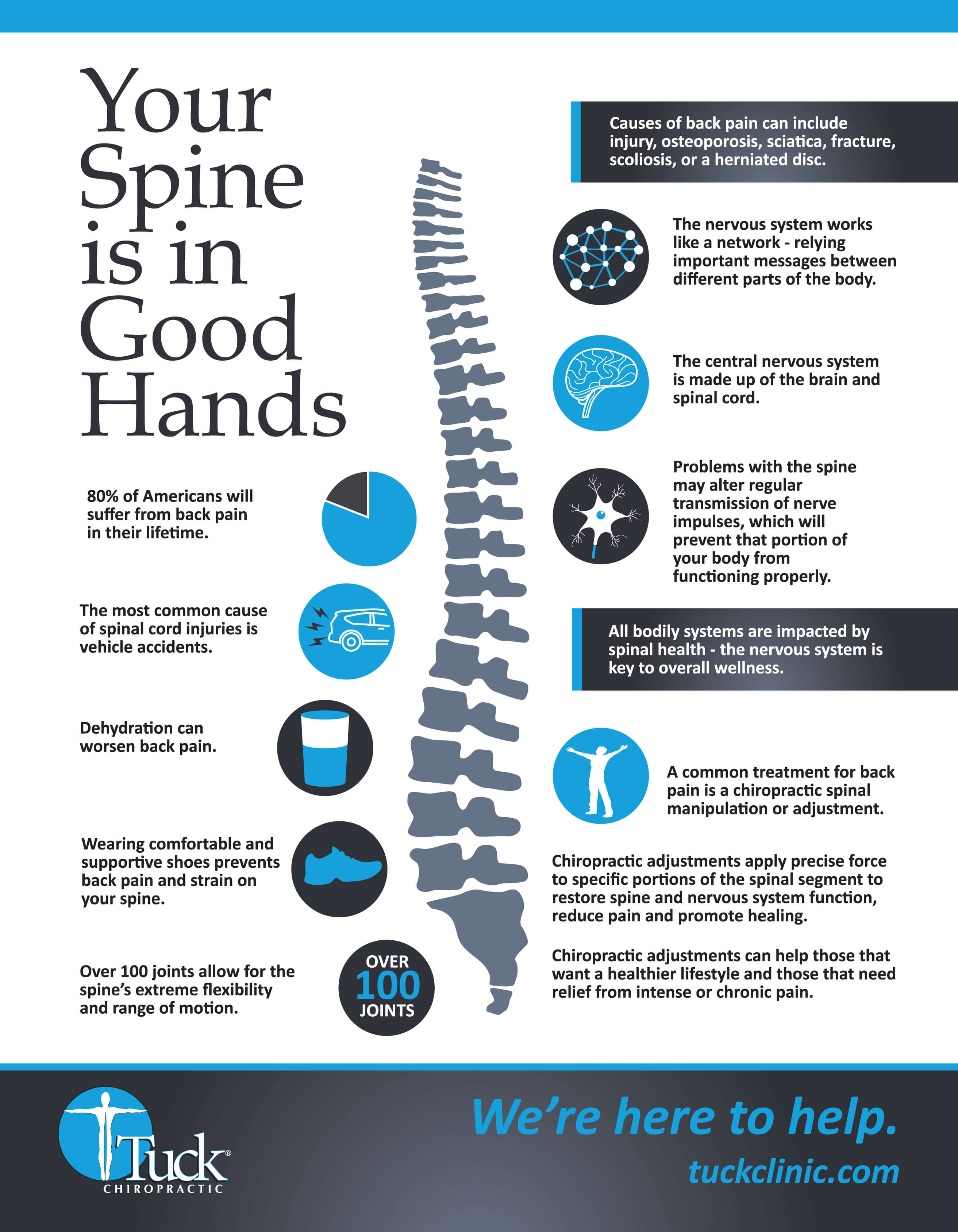Frequent Activities That Contribute To Pain In The Back And Ways To Stop Them
Frequent Activities That Contribute To Pain In The Back And Ways To Stop Them
Blog Article
Authored By-Snyder Glud
Preserving appropriate stance and avoiding usual challenges in day-to-day tasks can considerably influence your back wellness. From exactly how you rest at your desk to exactly how you raise heavy items, tiny adjustments can make a big distinction. Imagine a day without the nagging back pain that impedes your every move; the solution may be less complex than you believe. By making a couple of tweaks to your everyday practices, you could be on your means to a pain-free presence.
Poor Pose and Sedentary Lifestyle
Poor pose and a sedentary lifestyle are 2 major contributors to back pain. When you slouch or hunch over while resting or standing, you placed unnecessary pressure on your back muscles and spine. This can bring about muscular tissue discrepancies, tension, and at some point, persistent back pain. Additionally, sitting for extended periods without breaks or exercise can weaken your back muscles and lead to stiffness and pain.
To combat poor position, make a mindful effort to sit and stand directly with your shoulders back and aligned with your ears. Bear in mind to keep your feet flat on the ground and prevent crossing your legs for extensive periods.
Including normal extending and enhancing workouts right into your everyday regimen can likewise assist improve your pose and minimize neck and back pain connected with an inactive lifestyle.
Incorrect Training Techniques
Improper lifting techniques can significantly contribute to neck and back pain and injuries. When you lift heavy items, remember to bend your knees and utilize your legs to raise, as opposed to depending on your back muscles. Prevent twisting your body while lifting and maintain the item near your body to minimize pressure on your back. It's crucial to preserve a straight back and prevent rounding your shoulders while lifting to avoid unnecessary stress on your spinal column.
Constantly analyze the weight of the object before lifting it. If it's too heavy, request for aid or use equipment like a dolly or cart to carry it safely.
Keep in mind to take breaks throughout lifting tasks to offer your back muscular tissues a chance to rest and protect against overexertion. By applying proper training strategies, you can protect against pain in the back and lower the danger of injuries, guaranteeing your back remains healthy and solid for the long term.
Absence of Regular Exercise and Stretching
A sedentary way of living without normal workout and extending can considerably add to neck and back pain and discomfort. When you don't take part in physical activity, your muscle mass become weak and inflexible, causing inadequate pose and increased strain on your back. Routine exercise assists enhance the muscular tissues that support your spine, enhancing security and reducing the threat of back pain. Including extending right into your routine can likewise enhance versatility, preventing stiffness and discomfort in your back muscle mass.
To avoid back pain brought on by a lack of exercise and extending, go for at least 30 minutes of moderate physical activity most days of the week. Include exercises that target your core muscles, as a solid core can aid minimize stress on your back.
Furthermore, take breaks to extend and move throughout the day, especially if you have a workdesk task. Basic stretches like touching your toes or doing shoulder rolls can aid alleviate stress and prevent neck and back pain. Focusing on routine exercise and stretching can go a long way in keeping a healthy and balanced back and minimizing discomfort.
integrative/holistic therapy , remember to sit up directly, lift with your legs, and stay active to prevent pain in the back. By making basic changes to your everyday habits, you can prevent the discomfort and constraints that include back pain. Deal with your spine and muscular tissues by exercising great posture, appropriate lifting methods, and routine workout. Your back will certainly thanks for it!
